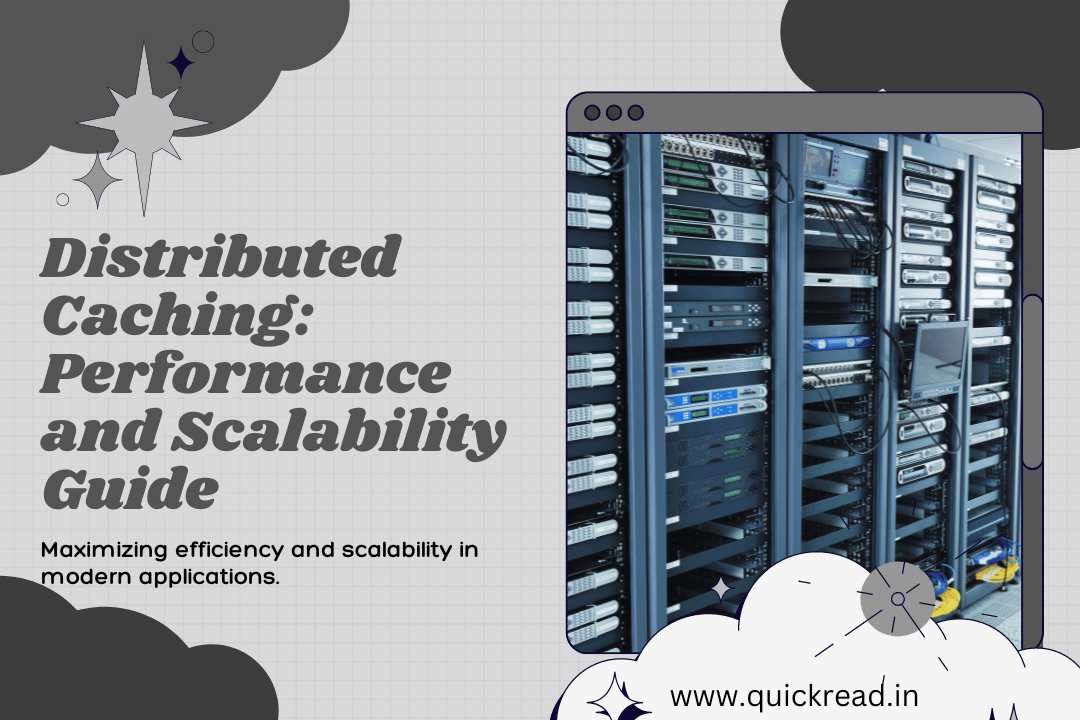Introduction
In the digital age, where speed and efficiency are paramount, distributed caching has emerged as a critical technology to enhance the performance and scalability of applications. Whether you’re a business owner, a web developer, or an IT enthusiast, understanding distributed caching can significantly impact how you manage and optimize your digital infrastructure. This article aims to demystify distributed caching, explaining its benefits, how it works, and why it’s essential for modern applications.
What is Distributed Caching?
Distributed caching is a method of storing data across multiple servers, or nodes, to improve data retrieval speed and enhance the performance of applications. Unlike traditional caching, which stores data on a single server, distributed caching spreads the load across several servers, ensuring that no single point becomes a bottleneck.
Key Benefits of Distributed Caching
- Improved Performance: By storing data closer to the user and reducing the need to access the primary database, distributed caching significantly enhances application response times.
- Scalability: Distributed caching systems can easily scale horizontally by adding more nodes to the cache cluster, accommodating increased load and growing data demands.
- Fault Tolerance: With data distributed across multiple nodes, the system can withstand individual node failures without significant performance degradation.
How Does Distributed Caching Work?
At its core, distributed caching involves dividing data into segments and distributing these segments across different nodes in a network. Here’s a step-by-step breakdown of how it typically works:
- Data Segmentation: Data is divided into manageable chunks or segments.
- Distribution Across Nodes: Each segment is stored on different servers, or nodes, within the cache cluster.
- Data Retrieval: When a request is made, the system identifies the node containing the relevant data segment and retrieves it.
Example Scenario
Imagine a popular e-commerce website experiencing heavy traffic during a sale. Without distributed caching, every user request would hit the primary database, causing slowdowns and potential crashes. With caching, product details, user session data, and other frequently accessed information are stored across multiple nodes. When users make requests, data is quickly retrieved from the nearest node, ensuring a smooth shopping experience.
Types of Distributed Caching Systems
There are several types of distributed caching systems, each suited to different use cases:
- In-Memory Caching: Stores data in the RAM of multiple servers. Examples include Redis and Memcached. Ideal for high-speed data access.
- Disk-Based Caching: Uses the disk storage of multiple servers. While slower than in-memory caching, it is suitable for larger datasets. Examples include Apache Cassandra.
- Hybrid Caching: Combines in-memory and disk-based caching, offering a balance between speed and storage capacity.
Popular Distributed Caching Tools
- Redis: An open-source, in-memory data structure store used as a database, cache, and message broker. Known for its high performance and support for various data structures.
- Memcached: A general-purpose distributed memory caching system, widely used for speeding up dynamic web applications by alleviating database load.
- Apache Ignite: A distributed database, caching, and processing platform designed to store and compute on large-scale data sets in real-time.
Implementing Distributed Caching: A Step-by-Step Guide
Implementing caching in your application involves several steps:
- Choose the Right Caching Tool: Depending on your specific requirements (e.g., data size, speed, ease of use), select a suitable distributed caching tool.
- Set Up the Cache Cluster: Configure multiple nodes that will store the cached data.
- Integrate with Your Application: Modify your application to interact with the distributed cache for data storage and retrieval.
- Monitor and Optimize: Regularly monitor the performance of your cache cluster and make adjustments as needed to optimize performance.
Example Implementation with Redis
Let’s consider an example of implementing distributed caching using Redis:
- Install Redis: Download and install Redis on multiple servers.
- Configure Redis Cluster: Set up a Redis cluster with multiple nodes, specifying the role of each node (e.g., master, slave).
- Integrate with Application: Modify your application code to use Redis for caching. For instance, in a web application, you might cache user session data in Redis.
- Monitor: Use Redis monitoring tools to keep track of cache performance and health.
Best Practices for Distributed Caching
To maximize the benefits of DC, follow these best practices:
- Identify Cacheable Data: Not all data is suitable for caching. Focus on frequently accessed, read-heavy data.
- Set Appropriate TTLs (Time-to-Live): Define how long data should remain in the cache before expiring. This helps in maintaining cache freshness and preventing stale data.
- Use Cache Invalidation Strategies: Implement strategies for cache invalidation, such as write-through, write-behind, or manual invalidation, to ensure data consistency.
- Monitor Cache Performance: Regularly monitor cache hits, misses, and overall performance to identify and resolve potential issues.
Challenges and Solutions in Distributed Caching
While distributed caching offers significant benefits, it also presents certain challenges:
- Data Consistency: Ensuring that cached data remains consistent with the primary database can be challenging. Solutions include using cache invalidation strategies and ensuring atomic operations.
- Network Latency: Data retrieval speed can be affected by network latency. Solutions include optimizing network infrastructure and placing cache nodes closer to end users.
- Scalability Issues: As data and traffic grow, the cache cluster needs to scale efficiently. Solutions include using auto-scaling features of modern cloud-based caching solutions.
Conclusion
DC is a powerful tool for enhancing the performance and scalability of modern applications. By understanding its principles, benefits, and implementation strategies, businesses and developers can effectively leverage this technology to improve user experiences and handle growing data demands. Whether you are optimizing a high-traffic website or a complex enterprise application, distribute caching can be a game-changer in achieving optimal performance.
FAQs
1. What is the difference between distributed caching and traditional caching?
Traditional caching stores data on a single server, which can become a bottleneck under heavy load. Distributed caching, on the other hand, spreads data across multiple servers, enhancing performance, scalability, and fault tolerance. By distributing the load, it ensures that no single point of failure can cripple the entire system, making it more robust and efficient for large-scale applications.
2. How does distributed caching improve application performance?
DC improves application performance by storing frequently accessed data across multiple nodes. This reduces the need to access the primary database for every request, significantly lowering response times. By retrieving data from the nearest cache node, it minimizes latency and enhances user experience, especially for high-traffic applications.
3. Can distributed caching handle large datasets?
Yes, distributed caching can handle large datasets by distributing data across multiple nodes, each with its own storage capacity. Systems like Apache Ignite and Redis Enterprise are designed to scale horizontally, accommodating growing data volumes without compromising performance. This scalability makes caching suitable for applications with extensive data needs.
4. What are some common use cases for distributed caching?
Distributed caching is commonly used in scenarios requiring high-speed data access and scalability. Examples include:
- E-commerce websites for caching product details and user sessions.
- Content delivery networks (CDNs) for distributing web content globally.
- Social media platforms for storing user profiles and feed data.
- Real-time analytics applications for quick data retrieval.
5. How do I choose the right distributed caching solution for my application?
Choosing the right distributed caching solution depends on factors like data size, read/write patterns, speed requirements, and ease of integration. In-memory solutions like Redis are ideal for high-speed access, while disk-based solutions like Apache Cassandra are suitable for larger datasets. Evaluating your specific needs and testing different solutions can help in making an informed decision.


